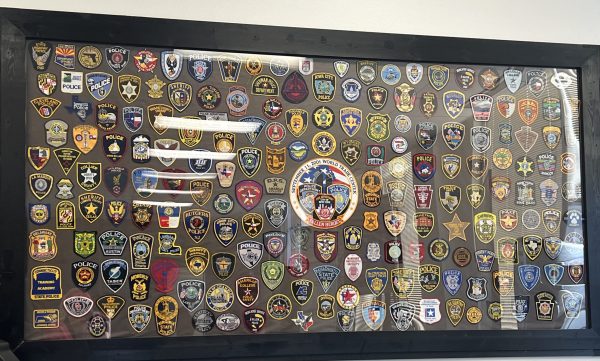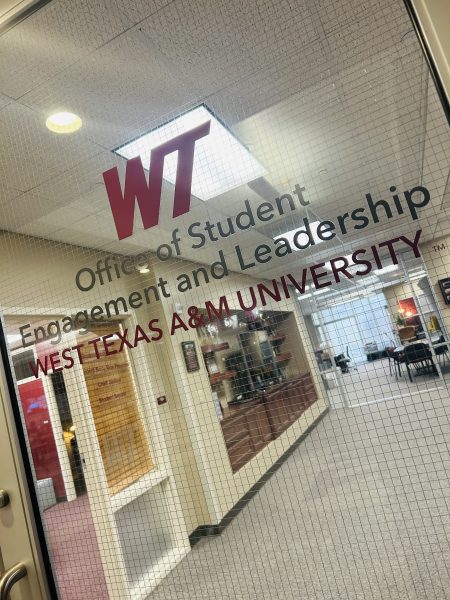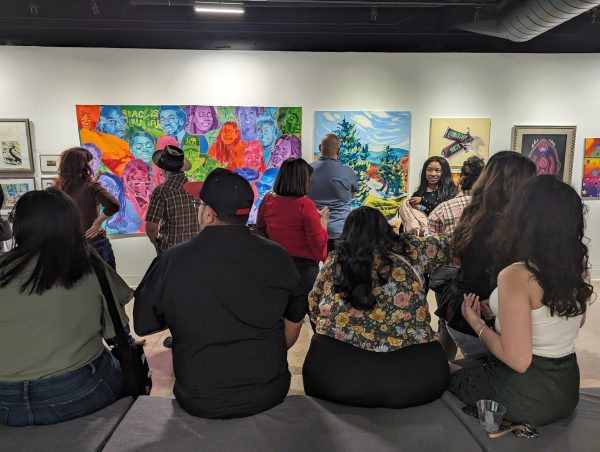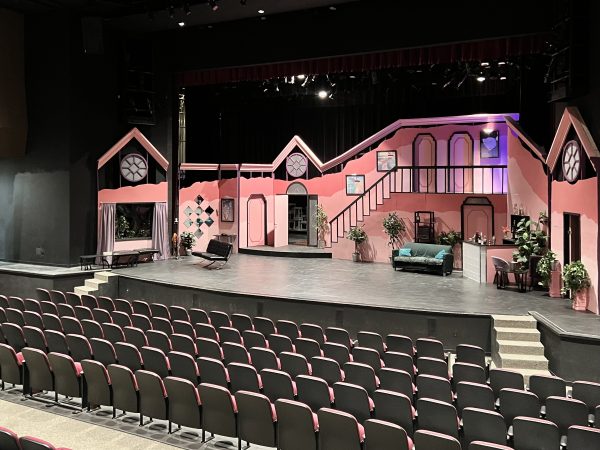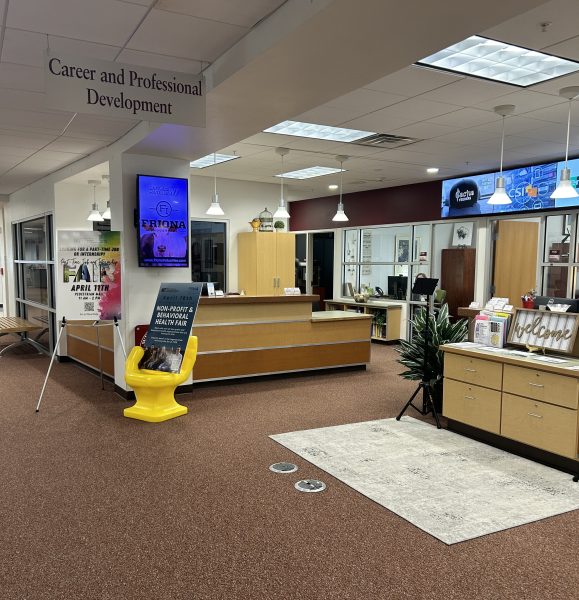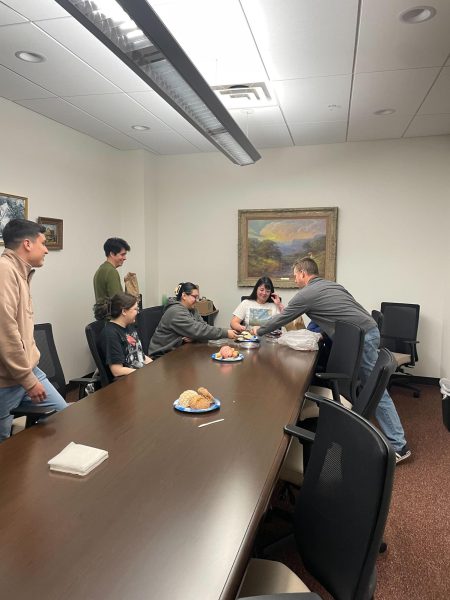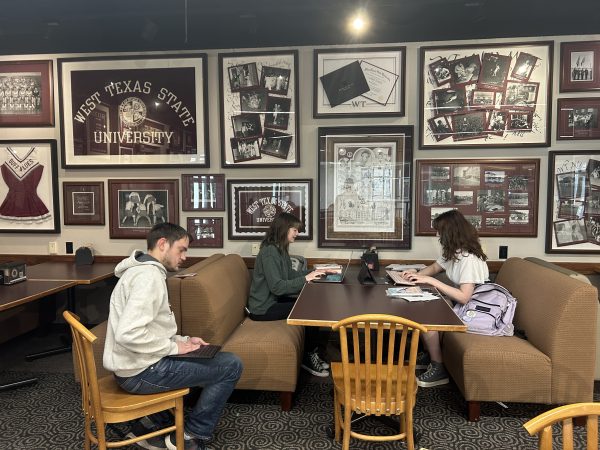Bedwell looks to improve campus beautification
March 4, 2015
Kaley Green also contributed to this story
Audio segment included.
Monday, Feb. 25 at 5:00 a.m. the grounds crew of West Texas A&M University was already preparing for a day full of snow. The main focus when snow hits is to clear the sidewalks in front of the main buildings so that students living on campus will be able to travel between buildings such as dorms and the cafeteria.
But unlike students who normally complain of snow, plants and trees necessary for campus beautification are raking in the benefits of the moisture.
Larry Bedwell, Grounds Manager at West Texas A&M University, has been working to provide the campus with trees, plants and flowers. The past two years Bedwell has received a grant from the Chapman Forestry Foundation. He can spend up to $5,000 on trees and they will match half of his spendings. Since obtaining the grant the university has been able to plant 25 trees each year. To be considered for the grant, Bedwell has to submit a proposal to the company stating the purpose and plant being purchased with the grant money. Bedwell has already submitted the application for this year and is hopeful to receive the grant again. He will find out in the coming weeks and plans to start planting new trees in the fall.
“Typically we wait and plant them in the fall.” Bedwell said. “We have a little more time then and fall is a great time to plant the trees. But I always look at the overall campus map and see where we’ve lost trees. Last year we planted quite a few around the grand lawn at the Buffalo Courts…We lost a lot of those trees because of the drought.”
Bedwell also notes all the older trees on campus when making his plans as well, that way there can be a solid canopy of trees continually providing shade to areas around WT. Bedwell, the campus beautification committee and the president have worked together to comply a list of plants and trees that are accepted on campus to provide consistency on campus.
“Our plants were still lush and green when we got that first freeze,” Bedwell said. “So, our first priority will be replacing those trees that we’ve lost then we will start looking a flowerbeds and changing out from the pansies for the spring color.”
Many of the plants bought on campus are purchased from Liz Moore, Research Associate in the Agriculture Science Department, and her horticulture class. Students are required to work on a project each semester and help with the plant growing process in the greenhouse on campus.
“We learned about plant anatomy, how different types of plants grow best, greenhouses, landscape design, and basic things like grasses, trees and the maintenance comes with them,” Amy Weinheimer, junior Plant, Soil and Science major, said.
Part of the horticulture class is learning basic plant care knowledge which includes how to water indoor plants. Moore said that many people will purchase plants, bring them home and end up overwatering them which ultimately makes the plant die.
“There’s a lot of basic plant care knowledge that I can help give to the students that puts the ball in their court as far as growing a healthy plant and even just how to properly water a house plant,” Moore said. “A lot of people just overload their plants because they think ‘Oh, I need to water this once a week’ or maybe twice a week and what happens is they saturate those roots of a plant and the oxygen can’t to the roots of the plant and the plant ends up dying.”
From this overwatering the plant roots will end up rotting. House plants are grown in a controlled environment, meaning there is not outside extremities and they do not require a lot of watering. Moore recommends watering house plants once every two weeks.
“It’s a really interesting class that makes you appreciative for the details, preparation and work that goes into creating beautiful landscapes,” Weinheirmer said. “Even if you don’t plan on being a landscaper it’s good information to know if you want to have a nice yard someday.”
Along with purchasing plants from the horticulture class on campus, Bedwell also purchases a large sum of the universities trees and plants from local business Double D Nursery. Bedew said that this nursery usually has all the trees needed. If the nursery does not have the specific plant types needed to remain consistent on campus, then he will also make purchases from Nursery Direct in Lubbock. Bedew picks out each tree that is to be planted at the university.
Bedwell plans to improve greenhouse quality in an effort to increase plant production and efficiency. WT is one of the furthest satellite schools from the Texas A&M campus in College Station which grows and provides plants to other schools within the A&M system. However, because WT is so far away Texas A&M cannot deliver the plants to the WT campus therefore Bedwell recognizes the need for a self-sustaining greenhouse on campus.




